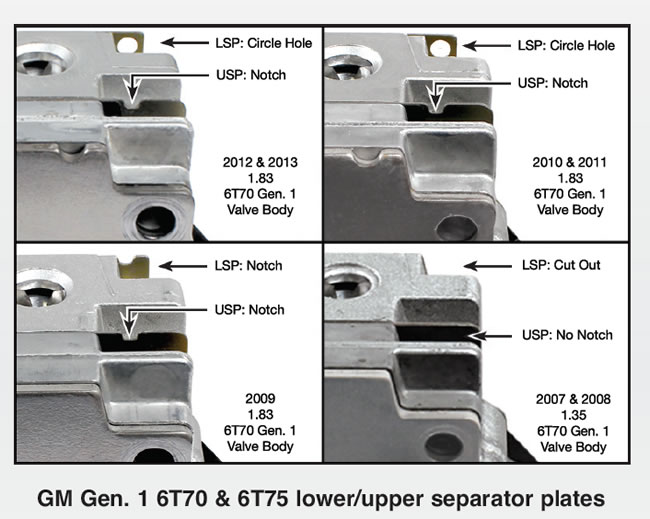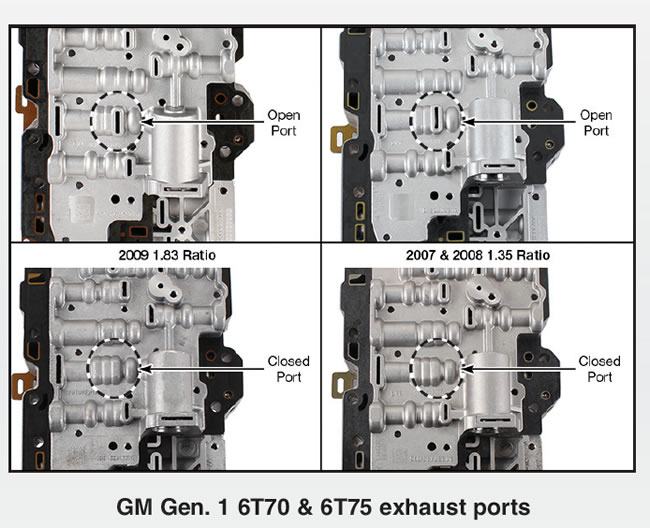
TASC Force Tips
- Author: Jason Larochelle
- Subject Matter: 6T70 & 6F50
- Issue: Compare and contrast
Teamwork creates similarities & differences in 6T70 &6F50
Competition and rivalry have been instrumental to technological development throughout the history of motor vehicles. Car manufacturers are always trying to one-up their competitors, whether it be with greater fuel efficiency, speed, interior features, etc. These advances are then made available to the consumer – at a cost. Keeping this cost to a minimum is the most challenging aspect of development; after all, engineering, building prototypes, testing and re-tooling are all very costly. But what if two companies could pool resources and split the savings?
In 2002, two rival companies did just that and began developing a new 6-speed transmission, with their sights set on increasing fuel economy in front- and all-wheel-drive vehicles. Engineers from Ford and GM gathered together to create a 6-speed that they both could utilize in upcoming models. The collaboration saved both automakers approximately 40% in development costs and brought the transmission to the public much faster than it otherwise would.
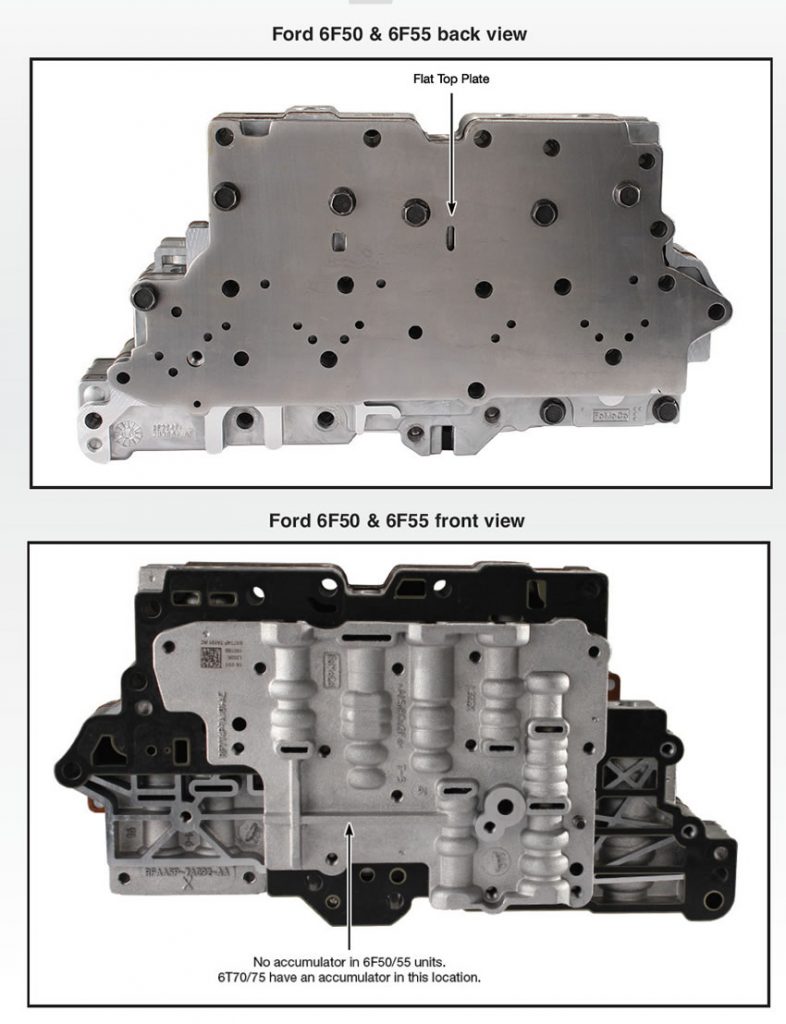

Four years later, the results of the collaboration were two very similar (though slightly different), highly efficient, 6-speed transmissions. They boasted a 4% increase in efficiency over similar vehicles with automatic 4-speeds. Ford decided to name their models 6F50 and 6F55, while GM decided on 6T70/6T75/6T80. Ford has used their transmissions in the Edge, Taurus and Escape, to name a few; while GM has used them in the GMC Acadia and Terrain, and Chevy Impala and Traverse.
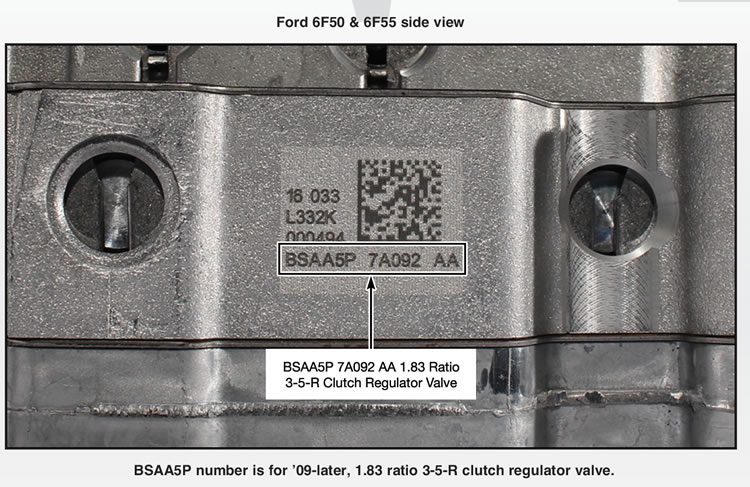
While the 6F and 6T transmissions share many of the same parts, they’re not carbon copies. Because some development occurred privately within each company, one of the main differences is how they control shifts and calibrations. GM’s solenoid body contains the TCM, whereas Ford uses an external PCM. Ford uses seven solenoids, while GM uses eight solenoids and four pressure switches in their 6T70. For that reason, the two manufacturers have a different channel plate. There are several other instances of this, so don’t assume that they both take the same parts.
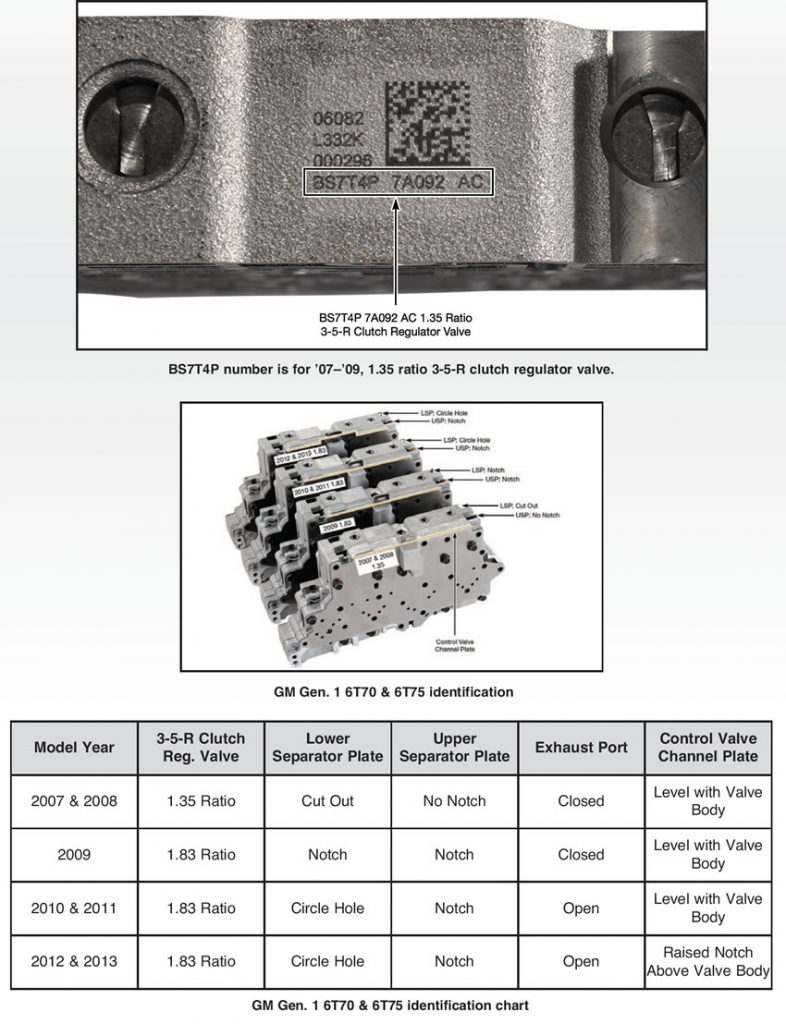

Here’s a bit more information about some key valve body differences:
